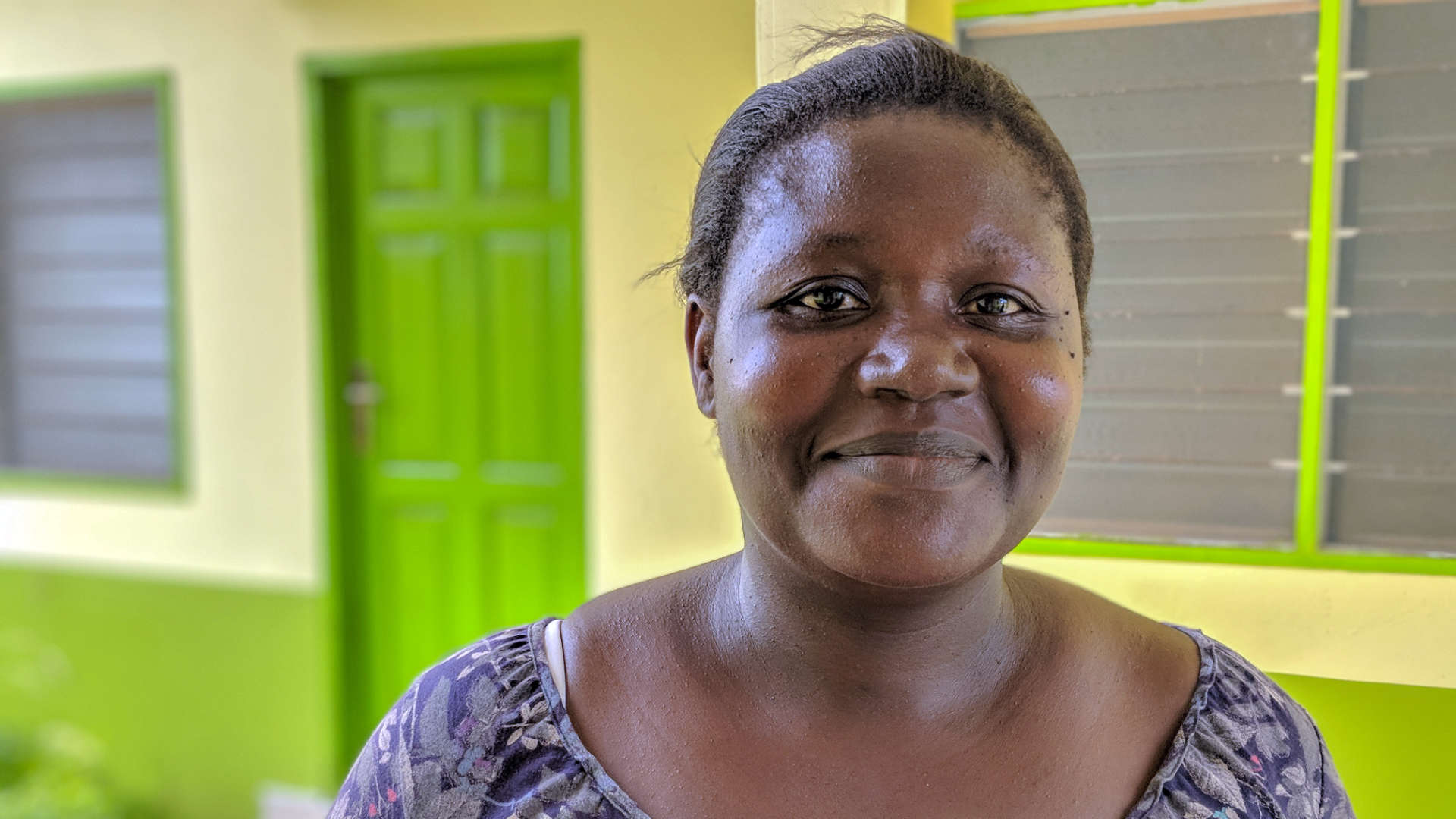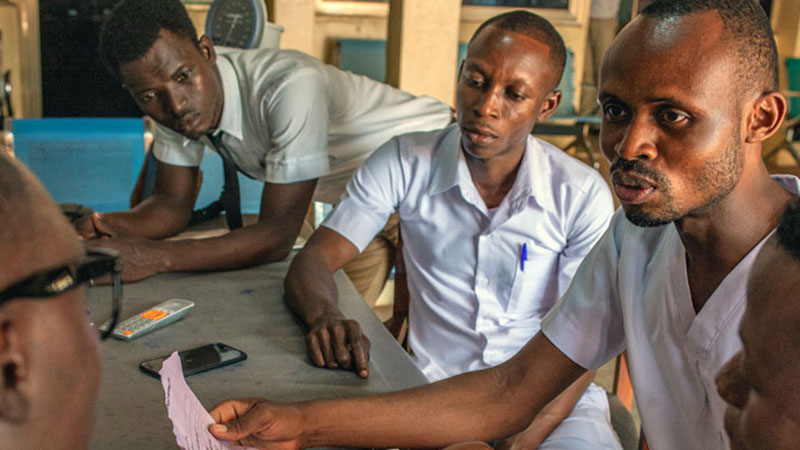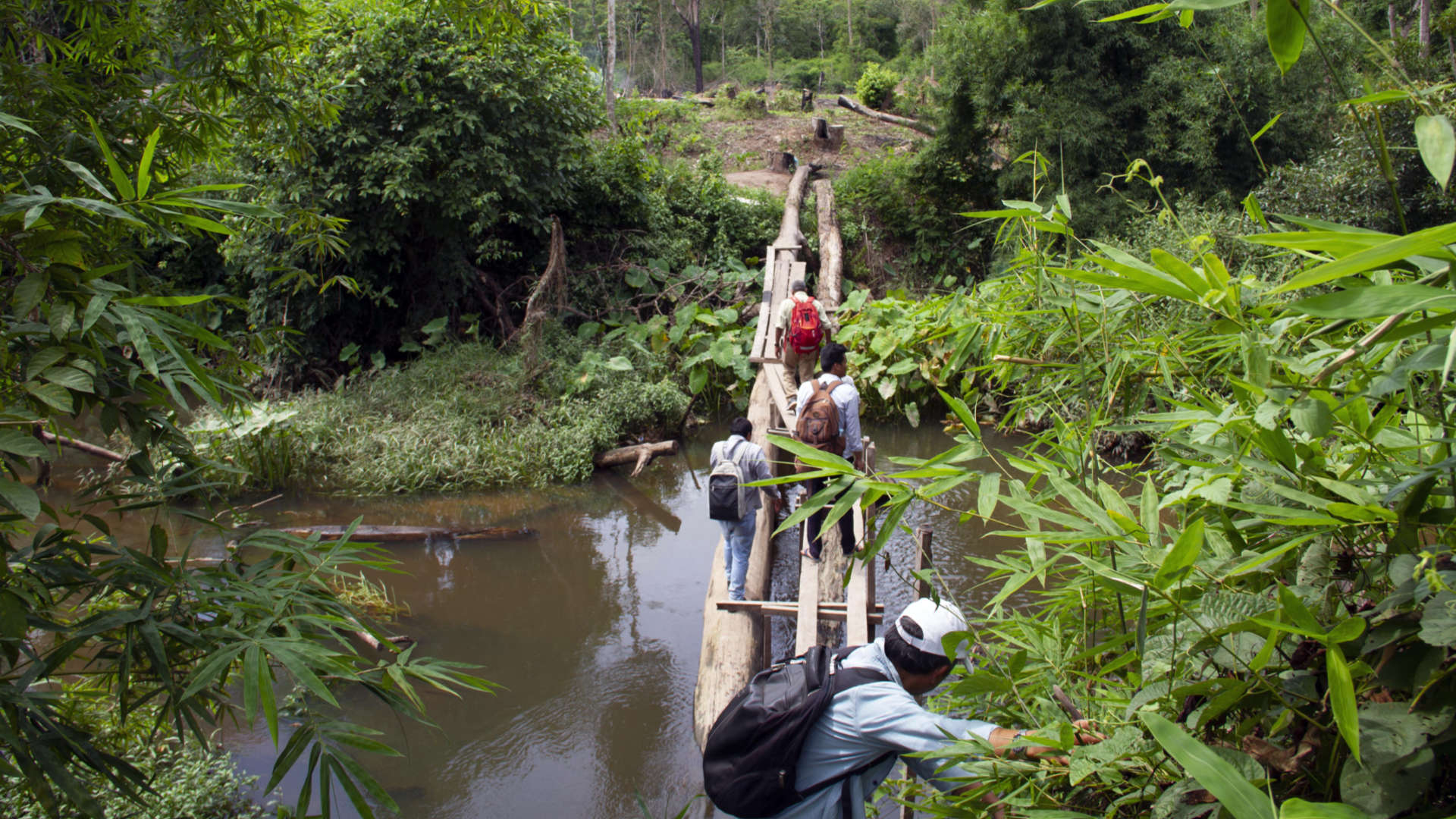URC is committed to locally led development that features strong collaboration, equitable programming, and sustainable health outcomes. With that goal in mind, URC brought together forward-thinking innovators as part of a learning tour to showcase and promote the scale-up of community-led innovations in rural Bangladesh.
The Jan. 19 learning event – which followed the URC-convened “Integrated Community Development for Better Health: Perspectives from Bangladesh” learning event in Dhaka on Jan. 17 – was hosted by local government officials in Satkhira Sadar, an upazila, or district sub-unit, in rural Khulna and attended by local entrepreneurs, community health workers, and community leaders.
The Satkhira Sadar event served as a knowledge-sharing forum on the highly successful Healthy Village model implemented by the Max Foundation, in collaboration with the National Institute of Local Government and the Community Clinic Health Support Trust. The model seeks to ensure that at least 90% of residents achieve and maintain key health indicators, including:
- Handwashing with soap at the five critical times;
- Using hygienic latrines;
- Regularly monitoring child growth;
- Pre- and post-natal care for women;
- Menstrual hygiene; and
- Meeting minimum dietary needs, especially for pregnant and lactating women and children under five.
The model has effectively reduced stunting rates in Bangladesh, cutting the rate in half in five districts, from 51% in 2018 to 25% in 2021.
LEFT: A community health worker at a Healthy Village washes her hands with locally-built, cost-effective infrastructure. Photo credit: Max Foundation.
RIGHT: Two local entrepreneurs in Bangladesh market their health commodities at a community health dialogue. Photo credit: Max Foundation
Health for All
During the event, local partners identified best practices, lessons learned, and steps for scaling up. Community health workers shared their journey towards building healthy villages and how they maintained improved health outcomes even two years after the program transitioned fully to local government and community ownership.
“How can one of us be healthy if everyone is not healthy?” asked one health worker, explaining the motivation that drives her work.
“This is the ethos of this community,” said Jean Margaritis, URC’s Portfolio Director for Asia, the Middle East, and North Africa. “This is a powerful example of the community’s ability to find its own solutions.”

URC began working to improve the quality of healthcare delivery in Bangladesh more than 30 years ago. The organization focuses on improving health services delivery at all levels of the healthcare system, from communities, health centers, and hospitals to villages, districts, and provinces, as well as the national level. URC collaborates with government officials, civil society, and the private sector in communities around the globe to identify service delivery gaps and local solutions that strengthen systems, ensuring that people can access the care they need when they need it.
Learn more about URC’s work in Asia.





